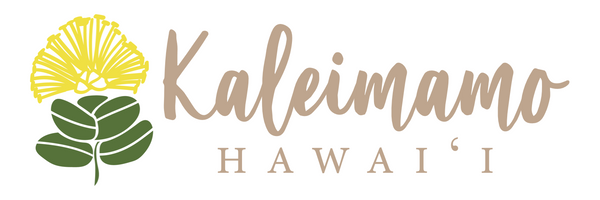Ulu Hōkū
Today, most people can’t get too far without their phone’s map app at the ready. Imagine navigating thousands of miles on the open ocean in a canoe, navigating your way with only natural elements like the stars, sun, moon, ocean currents, wind, and rain. It is astounding to think that Polynesians navigated their way from Kahiki by canoe to live in Hawaiʻi using only these natural elements, paramount of which were the stars for directional guidance. This print features a few of the stars and constellations that are particularly helpful for navigation, including: Manaiakalani, Ka Hei-hei o Nā Keiki, Nā Hiku, Hōkūpaʻa, and Hānaiakamalama.

Manaiakalani is the name of the demi-god Māui’s fishhook, which, by one account he used to attempt to pull the Hawaiian islands closer together and, in another, pull new islands from the bottom of the sea. This constellation is known elsewhere as Scorpio. Manaiakalani can be seen in Hawaiʻi for most of the night during the summer.
Ka Hei-Hei o na Keiki was named for its resemblance to childrens’ string game (heihei). This constellation is known elsewhere as Orion and is visible when Manaiakalani is not. In association with a group of other stars, the bright stars of Ka Hei-hei are a helpful navigational guide.


Nā Hiku, also known as the Big Dipper, and Hōkūpaʻa, also known as the North Star and the end of the handle of the Little Dipper, are key parts of a line of navigation stars that also include Hokuleʻa (Artcturus), Hikianalia (Spica), Meʻe (Corvus), Hānaiakamalama (the Southern Cross) and Nā Kuhikuhi (The Pointers). Together the rising and setting of these constellations provide a directional guide for navigation.
To learn more about traditional Polynesian wayfinding, visit www.hokulea.com.

This print was created in partnership with Kaille Harris, an incredibly talented watercolor and digital artist and owner of Under the Moon.
